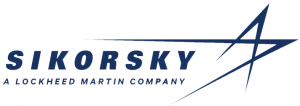 Many manufacturing companies depend on production equipment that contain a wide variety of roll, such as , idler rolls, feed rolls, accumulator rolls, pinch rolls, pinch rolls, web spreader rolls and countless other types. Keeping all of these machinery elements in true alignment can be a daunting task.
Many manufacturing companies depend on production equipment that contain a wide variety of roll, such as , idler rolls, feed rolls, accumulator rolls, pinch rolls, pinch rolls, web spreader rolls and countless other types. Keeping all of these machinery elements in true alignment can be a daunting task.
As a sheet of processed material passes through the production machine, it may be stretched unevenly or distorted if the path of travel is longer on one side of the machine than the other. This can lead to material defects, such as:
- Permanent stretching
- Wrinkling
- Surface Damage
- Tearing
- And other product quality problems
As material processing becomes more demanding and machinery speeds increase, the importance of roll alignment becomes more critical.
For years, rolls have traditionally been aligned with optical scopes, piano wire, pi-tapes, tramming bars and other mechanical methods. These processes are time consuming and often lack the roll alignment accuracy required. In addition, they can also be quite expensive.
Consequently, many companies reluctantly rely on alignment service companies to align their production machinery. Depending on the service company’s schedule, this could mean unnecessary hours or even days of costly downtime.
Luckily, the development of new laser measurement tools has transformed the way many production teams and maintenance personnel now handle their roll alignment. A laser alignment system is compact, precise, and easy to use. Maintenance personnel can measure and align their own roll equipment whenever the need arises. A laser alignment system is ideal for preventative maintenance and company personnel can proactively identify misalignment and wear problems before there is a more costly breakdown. This flexibility allows production teams to quickly solve manufacturing problems and bring their machines back up on line with minimum downtime and lost revenue.


































